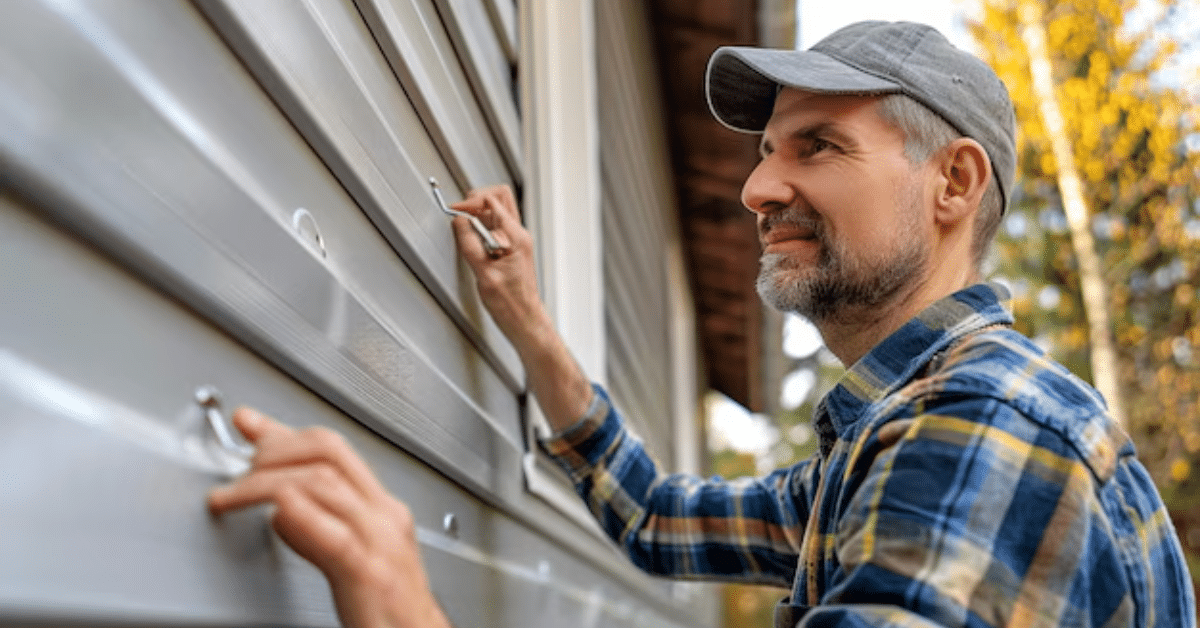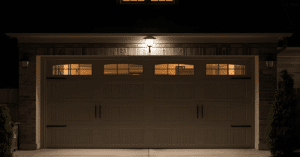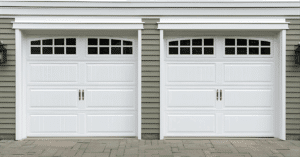A garage door is one of the most important parts of your home, providing security, convenience, and protection for your vehicles and belongings. However, like any mechanical system, it can develop problems over time. Knowing how to repair a garage door not only saves money but also helps you maintain the door’s performance and safety. Whether it’s a noisy door, a broken spring, or a malfunctioning opener, understanding the basics of garage door repair can make a big difference.
In this guide, we’ll explain the most common garage door issues, essential tools you’ll need, DIY repair steps, and when it’s best to call a professional.
Why Learning How to Repair a Garage Door Matters
Before diving into repairs, it’s important to understand why regular maintenance and timely fixes are critical. A malfunctioning garage door can compromise home security, damage your property, and even cause accidents. Addressing problems early can extend the life of your garage door system and help you avoid costly replacements.
Common Garage Door Problems
Knowing what can go wrong is the first step to learning how to repair a garage door effectively. Here are the most frequent issues homeowners face:
1. Broken Springs
Garage door springs are under extreme tension and can wear out or break over time. Signs of broken springs include the door failing to open or close properly or making loud snapping sounds.
2. Misaligned Tracks
If the tracks that guide the door become bent or misaligned, the door may stick or operate unevenly.
3. Malfunctioning Opener
Electrical issues or worn-out motor parts can cause the opener to stop working.
4. Damaged Panels
Weather, accidents, or age can cause dents or cracks in the panels, affecting the door’s appearance and function.
5. Worn Rollers and Hinges
Rollers and hinges allow smooth movement. When they wear out, the door may squeak, jerk, or get stuck.
Tools You’ll Need to Repair a Garage Door
Before starting any repair, gather the necessary tools. Having the right equipment makes the job safer and more efficient. Common tools include:
- Adjustable wrench
- Screwdrivers (flathead and Phillips)
- Pliers
- Socket set
- Level
- Safety gloves and goggles
- Replacement parts (springs, rollers, cables, or panels as needed)
How to Repair Garage Door Springs
One of the most critical steps in learning how to repair a garage door is understanding how to handle springs safely. Garage door springs are under high tension and can cause injury if mishandled.
- Disconnect the Power: Always unplug the opener to prevent accidental activation.
- Secure the Door: Clamp it in place with locking pliers.
- Remove the Broken Spring: Carefully release the tension using a winding bar.
- Install the New Spring: Replace it with the correct size and tension for your door.
- Test the Door: Check the balance and ensure smooth operation.
⚠️ Safety Tip: If you’re not experienced, hire a professional to replace springs. This repair can be dangerous without proper training.
How to Repair Garage Door Tracks
If your garage door is stuck or uneven, the tracks may need adjustment. Here’s how to fix them:
- Inspect the Tracks: Look for dents, bends, or debris.
- Loosen Screws: Slightly loosen the mounting brackets to adjust alignment.
- Straighten the Tracks: Use a rubber mallet to gently tap out dents.
- Tighten Screws: Re-secure the brackets after alignment.
- Lubricate: Apply a silicone-based lubricant for smooth operation.
How to Repair Garage Door Openers
A faulty opener is another common problem. Follow these steps:
- Check Power Supply: Ensure the unit is plugged in and the circuit breaker is not tripped.
- Replace Batteries: Dead remote batteries are often the culprit.
- Inspect Sensors: Make sure the safety sensors are clean and aligned.
- Adjust Settings: Use the opener’s manual to reset force and limit settings.
- Call a Technician: If the motor is burned out, professional repair is necessary.
How to Repair Garage Door Panels
Damaged panels not only affect the look of your door but can also cause balance issues.
- Assess the Damage: Determine if the panel can be repaired or needs replacement.
- Remove the Panel: Unscrew hinges and rollers attached to the damaged section.
- Install New Panel: Secure the replacement and reconnect hinges and rollers.
- Paint or Seal: Match the new panel to the existing finish for a seamless look.
Maintenance Tips to Prevent Future Repairs
The best way to avoid costly repairs is regular maintenance. Here are simple tips:
- Lubricate Moving Parts: Apply garage door lubricant to rollers, hinges, and tracks every few months.
- Tighten Hardware: Check bolts and screws regularly to prevent loosening.
- Balance the Door: Disconnect the opener and lift the door halfway. If it doesn’t stay in place, the springs may need adjustment.
- Inspect Weather Stripping: Replace cracked or worn seals to improve insulation.
When to Call a Professional
While learning how to repair a garage door is valuable, some issues require professional expertise. Call a technician if:
- The springs or cables are broken.
- The door is off its tracks.
- The opener motor is malfunctioning.
- You notice significant structural damage.
Professionals have the tools, training, and experience to handle complex repairs safely and efficiently.
Cost of Garage Door Repairs
Repair costs vary depending on the problem:
- Spring replacement: $100–$300
- Track adjustment: $125–$200
- Opener repair: $150–$350
- Panel replacement: $200–$500 per panel
Routine maintenance costs are generally lower and help prevent major expenses.
Final Thoughts on How to Repair a Garage Door
Knowing how to repair a garage door empowers homeowners to handle minor issues and maintain their doors for years. From fixing tracks to replacing rollers, many repairs can be done with basic tools and safety precautions. However, always recognize when a professional is needed—especially for high-tension parts like springs. With proper maintenance and timely fixes, your garage door will remain safe, reliable, and efficient.
Frequently Asked Questions (FAQ)
Q1. Can I repair a garage door myself?
A: Yes, you can handle minor tasks like lubricating parts or tightening screws, but spring or cable repairs should be left to professionals.
Q2. How often should I service my garage door?
A: Professional maintenance is recommended once a year to ensure smooth operation.
Q3. What is the average lifespan of a garage door?
A: With proper care, a garage door can last 15–30 years depending on materials and usage.
Q4. How do I know if my garage door spring is broken?
A: If the door won’t open, feels heavy, or makes a loud snapping sound, the spring may be broken.
Q5. How much does it cost to repair a garage door opener?
A: Repairs typically range from $150 to $350, depending on the issue.





